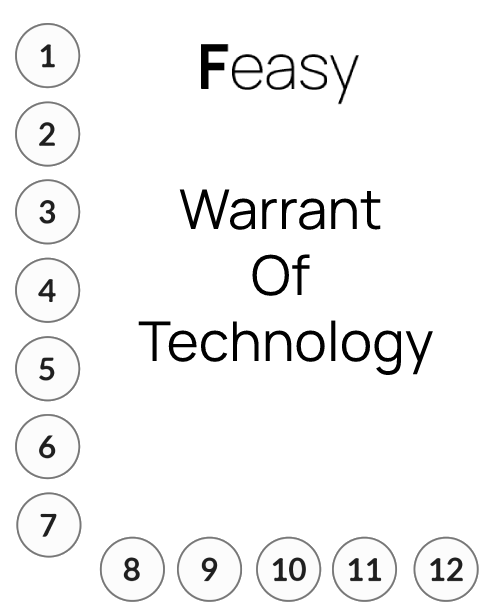Warrant of Technology (WoT).
Warrant of Technology (WoT) is a regular check to ensure that your technology is cost effective and secure.

Get the Most out of Technology.
Keep your technology WoT up to date at all times to ensure you are making the most of technology.
What gets Checked?
Hardware.
Software.
Networking and Security.
Policies and Procedure.
Website, email and intranet.
Information and data.
Training.
Back-up and disaster recovery.
Cost Savings & Improvements.

What happens if my technology fails?
If it’s something small we can usually fix it on the spot. If something larger needs fixing, our Feasy Technicians will explain exactly what needs to be sorted and write clear notes you can give to your IT vendor of choice or work with us, so you can save on technology bills.
What do you check in Software?
Software licencing status; how users are configured to access software (e.g., as administrators); standard software configuration (e.g., windows updates); software version(s), including operating system and office software; specialised software; virus protection; server software, including any backup software.
What do you check in Data?
Which data you save, which data you utilise, which email lists you maintain, and so on. What storage location do you have for your data?
What do you check in Disaster recovery?
How is each machine backed-up? How is the server backed-up? What is the procedure for reinstating lost data?
What do you check in the Hardware?
information on the organisation’s hardware, and any performance difficulties. Information about the server and peripherals (e.g. networked printers, standalone devices such as cameras and scanners, phones and 3G devices, etc.)
Policies & Procedures
Contacts and contracts with suppliers. Websites should have terms and conditions and disclaimer information readily available. Since early 2007 emails are legal documents and therefore should have company address information as standard for their email signature.
What do you check in Website & Webpresence?
Hosting; annual fee; domain name(s); developer; content management system; who has administrator privileges. List other places your organisation has a webpresence with full account
details (username and password) and a note of who is responsible for updates: eg. Facebook; Twitter etc
What do you check in Training?
Staff skills; staff training needs
Ask Us a Question.
Get in Touch.